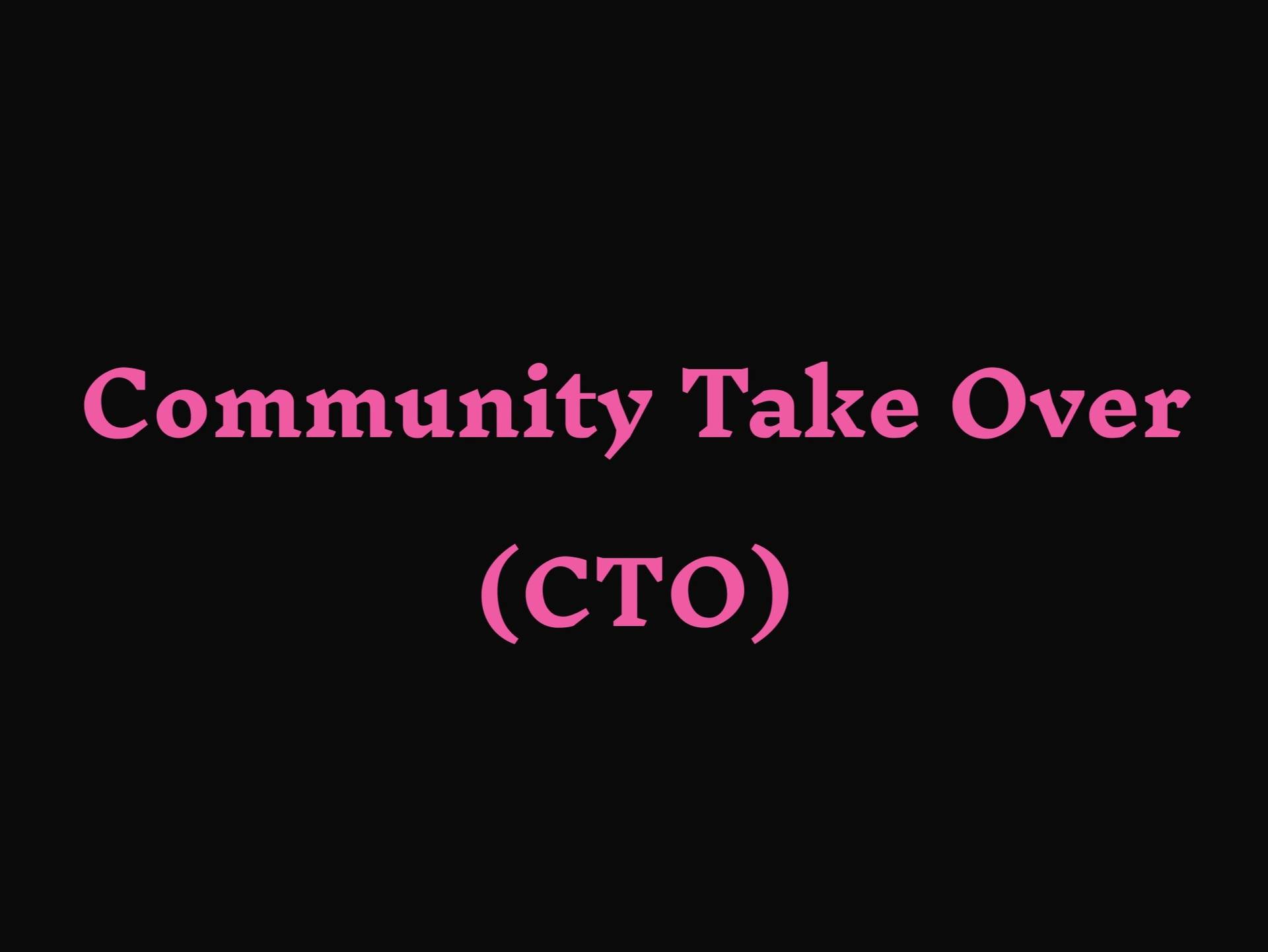订阅 wiki
Share wiki
Bookmark
Community Take Over (CTO)
Community Take Over (CTO)
加密货币中的社区接管 (CTO) 指的是一个项目的原始开发团队退出,随后由社区成员承担管理和运营的情况。这种模式代表了一种向去中心化治理和社区驱动型开发的转变,适用于那些可能已被放弃或经历过创始人离职的项目。[1]
概述
社区接管 (CTO) 的概念已经获得了显著的关注,尤其是在 meme 币领域,通过像 Pump.fun 这样的平台轻松创建代币导致了大量项目的涌现,其中许多项目很快就被其最初的开发者所放弃[1]。
在 CTO 场景中,社区介入以维护、运营或进一步开发一个项目,这发生在原始团队离开之后。这可能是由于多种原因造成的,包括原始开发者套现、失去兴趣或内部意见不合[2]。
当一个社区接管一个项目时,通常有两种方法来继续其运营。
第一种是部分继承,即新的社区团队获得对原始开发团队的账户和资产的控制权,本质上是在维持现有基础设施的同时替换管理层。
第二种是完全分离,即社区重新开始,创建新的社交媒体渠道、网站和社区平台,同时保留现有的代币及其底层信息[1]。这种社区主导的模式虽然具有挑战性,但可以促进代币持有者之间强大的凝聚力和所有权意识[1]。
起源
虽然“社区接管”一词最近更多地与 meme 币和较小的项目相关联,但一个项目在最初创建者减少参与后,继续或受到其社区的重大影响的概念,可以在早期的加密货币中看到。比特币就是一个例子,其化名创建者中本聪消失了,将项目的未来发展和方向主要留给了开发者和矿工社区[1]。
同样,狗狗币的创始人出售了他们的股份,并在 2015 年退出了社区开发,将项目的延续留给了其社区。这些实例可以被视为社区驱动延续的早期形式,早于正式的 CTO 术语[1]。
CTO 的原因
社区接管的发生可能有多种原因,通常源于原始项目开发者的行为或不作为[2]。常见的原因包括:
- 诈骗/Rug Pull: 最常见的原因,开发者在筹集资金或达到一定的市值后,故意放弃项目,通常会出售他们的股份并消失[2]。
- 沮丧/失去动力: 如果项目没有获得预期的关注或面临重大挑战,原始开发者可能会失去兴趣或变得沮丧,从而导致他们放弃项目。
- 分歧: 创始团队成员之间的内部冲突或分歧可能导致项目被放弃,如果无法达成解决方案。
在这些情况下,一个仍然相信项目潜力的积极社区可能会决定接管其管理和开发。
代表性项目
一些项目经历了社区接管,其中一些在社区管理下取得了显著的成功。
POPCAT ($POPCAT)
POPCAT 是 Solana 区块链上的一个 meme 币,其灵感来自于一只名为“Oatmeal”的猫,这只猫以其独特的面部表情而闻名[1]。
- 创建于 2023 年 12 月 12 日,初始供应量为 10 亿个代币[1]。
- 当市值低于 10 万美元时,原始创建者将其所有代币以及项目的合约更新所有权和社交媒体账户以 35,000 USDC 的价格出售给了一位名为 @jpeggler 的社区用户[1]。
- 在社区接管之后,该项目的受欢迎程度有所提高。
- 在推出后的 8 个月内,$POPCAT 的市值达到了 10 亿美元,成为第一个达到这一目标的猫主题 meme 币[1]。
- 在 11 月中旬,其市值超过了 20 亿美元[1]。
- 截至来源发布日期(2024 年 12 月),其市值维持在 13 亿美元[1]。
- 链上数据显示,大约有 114,700 名持有者,其中前 10 个地址持有 26.02% 的供应量,前 100 个地址持有 53.19% 的供应量[1]。
Quant ($Quant)
Quant 是一个 meme 币,起源于一位被称为“Kid Brother”的 10 岁儿童在 Pump.fun 上的直播[1]。
- 11 月 20 日,这位 Kid Brother 以 350 美元的价格购买了大约 5100 万个 $Quant 代币[1]。
- 他在 10 分钟内出售了这些代币,赚取了大约 30,000 美元的利润[1]。
- 在他退出以及一个被认为是嘲弄的姿态之后,社区做出了反应,价格飙升[1]。
- 在 4 个小时内,市值达到了 1 亿美元,这是一个显著的增长[1]。
- 据报道,由于他过早退出,这位 Kid Brother 错过了巨大的潜在利润[1]。
- 截至来源发布日期,市值已下降至约 120 万美元[1]。
Moo Deng ($MOODENG)
Moo Deng 是一个基于 Solana 的 meme 币,创建于 9 月 10 日,其灵感来自于泰国的一只小河马[1]。
- 创建者在代币推出后仅几个小时就出售了持有的所有 5100 万个代币[1]。
- 半个月后,市值超过了 4 亿美元[1]。
- 11 月 15 日,它达到了 8 亿美元的历史高点[1]。
- 截至来源发布日期,价格有所下降,但该代币在不到 3 个月的时间里,从其原始价格大幅上涨[1]。
- 社区接管被认为有可能通过消除原始创建者内部抛售的风险来加强共识和凝聚力[1]。
- 最新数据显示,大约有 70,400 名持有者,其中前 10 个地址持有总供应量的 37.58%[1]。
CTO 项目的优缺点
CTO 模式为一个加密货币项目带来了潜在的优势和挑战。
- 与去中心化保持一致: 社区主导的性质与加密货币中去中心化的核心原则保持一致[1]。
- 消除创始人风险: 原始团队的退出可以消除潜在的问题,例如创始人的大规模抛售(“鲸鱼”倾销)、利用合约漏洞以及初始团队持续的抛售压力[1]。
- 代币分配重组: 创始人退出可能导致代币的重新分配,从而可能扩大所有权[1]。
- 加强社区凝聚力: 社区管理可以增强成员之间的信任、参与感和归属感,如果社区凝聚力强,则有可能促进可持续发展[1]。
- 决策效率: 由于权力分散和潜在的分歧,社区治理在做出及时有效的决策方面可能面临挑战[1]。
- 资源分配: 在去中心化的社区结构中有效地管理和分配资源可能很困难[1]。
- 潜在的利益冲突: 不同的社区成员可能存在利益冲突,这可能会影响项目的方向和进展[1]。
- 新团队意图的不确定性: 代币持有者可能难以评估新的社区团队是否致力于长期发展,或者主要受短期投机的驱动[1]。
常见的 CTO 策略(虚假 CTO)
并非所有看起来像是社区接管的实例都是真实的。一些项目可能会模拟 CTO 场景来操纵市场,从而可能导致代币持有者的损失[1]。这些“虚假 CTO”通常遵循以下模式:
- 开发者创建和推广一个项目[1]。
- 当代币价格上涨时,原始开发者出售其所有代币[1]。
- 相同的开发者使用多个不同的钱包回购代币,以制造社区接管的假象[1]。
- 一旦由于感知到的接管和重新燃起的兴趣,代币价格再次上涨,原始开发者再次出售其代币[1]。
链上数据有时可以揭示这些伪装项目的特征,例如高交易量伴随着低交易活动,或者突然的、无法解释的价格飙升。提供开发者指标的工具,标记开发者代币销售或销毁的实例,可以帮助用户识别潜在的虚假 CTO[1]。
链上数据可以显示诸如突然的价格飙升之类的模式[1]
发现错误了吗?
